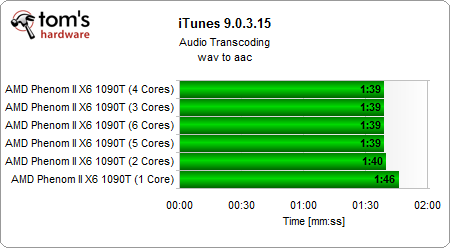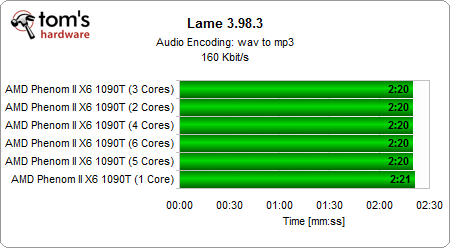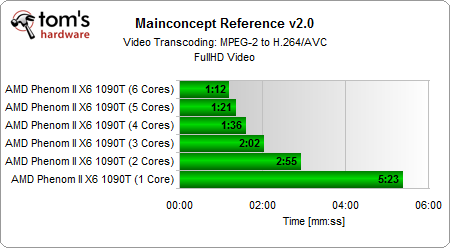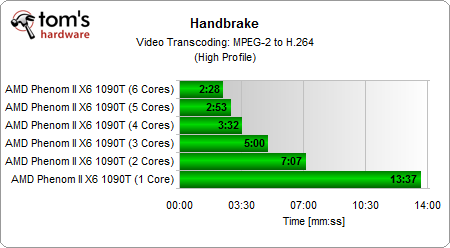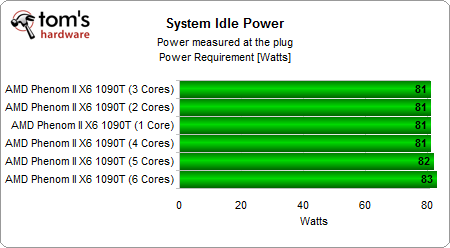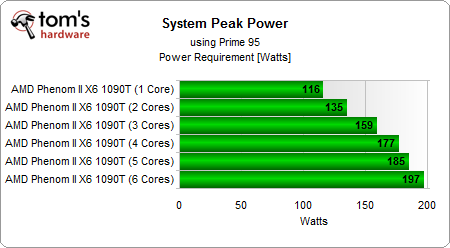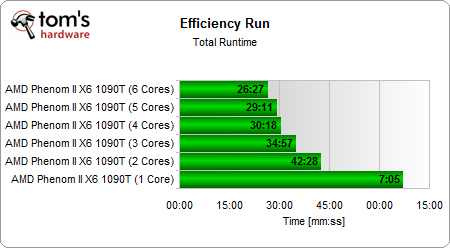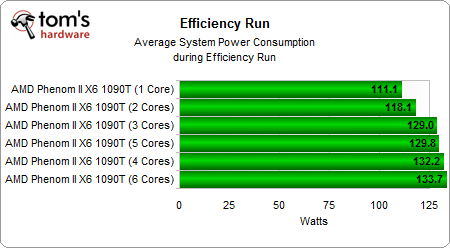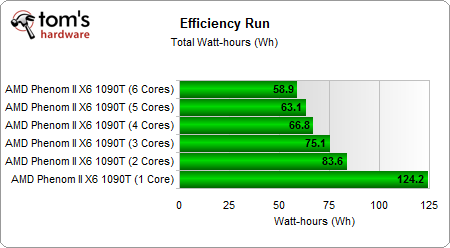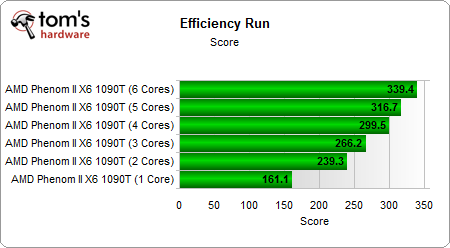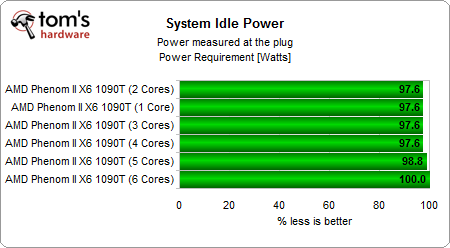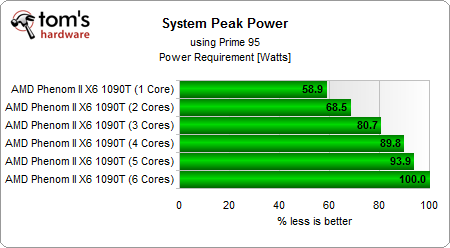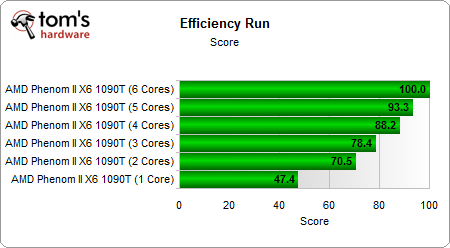
|
TopNax |
|
Home†††††† Previous††††††† AMD page†††††††† Intel page†††††††† Next |
Benchmark Results: Audio/Video |
|
Apparently, even one of the newer iTunes versions can't take much advantage of additional processing cores. Although audio transcoding is now pretty quick, this should really be fixed.
The same applies to Lame. It doesnít scale well on multiple cores.
MainConcept wants as many processing units as it can get, although the improvements become smaller the more cores you add.
There are beautiful performance results in HandBrake |
Benchmark Results: Power Consumption |
|
System idle power doesnít change too much if we disable individual cores. Roughly 15W to 20W are required by the graphics card, and the CPU drops power consumption anyway while idle.
Things are different under load. Every additional core adds to the overall peak power consumption. However, you can see that the added amount of power used with each additional core becomes smaller and smaller. This tells us that adding more cores should have a positive impact on performance per watt efficiency. |
Benchmark Results: Efficiency |
|
Six cores are decidedly fastest at completing our efficiency workload.
Interestingly, average power consumption was lower on five cores than on four during our workload.
Total power used scales well. It's obvious that the many-core configurations require less total power to complete our workload.
As a result, the higher active core counts deliver better performance per watt. |
Normalized Power And Efficiency Results |
|
2:00 AM - June 24, 2010 by Patrick Schmid and Achim Roos |
|
|
Conclusion
|
|
Our testing reveals that many workloads are still very much incapable of taking advantage of more than two cores. Titles like WinZip have not yet been optimized to run more than one thread, and it's a shame. Even the cheapest dual-core processors could deliver much better performance, if only the software would support it. This not only applies to the Lame MP3 encoder, but also to Appleís iTunes and Adobeís Acrobat 9, which is used for creating PDF documents. Since Apple and Adobe arenít exactly nobodies, this fact disappoints even more. But letís get back to our scaling analysis. Switching off processing cores will not reduce system idle power. AMD did a great job of mastering its power management on the 45 nm Thuban core. The system runs within the same 81W to 83W whether one or six cores are used. However, the results in peak power consumption show that average power draw per core drops with additional cores. In the end, peak power doesnít differ much whether four, five, or six cores are active. Yet, performance still increases considerably under thread-optimized workloads. For this reason, AMDís Phenom II X6 offers great performance, thanks to six processing cores, as well as increased efficiency as you scale up core count. Clearly, utilizing as many cores as possible maximizes performance per watt power efficiency. In other words, given that idle power doesnít change, and both performance and power efficiency increase with the core count, it doesn't make sense to switch off cores manually. |
|
Home†††††† Previous††††††† AMD page†††††††† Intel page†††††††† Next |
